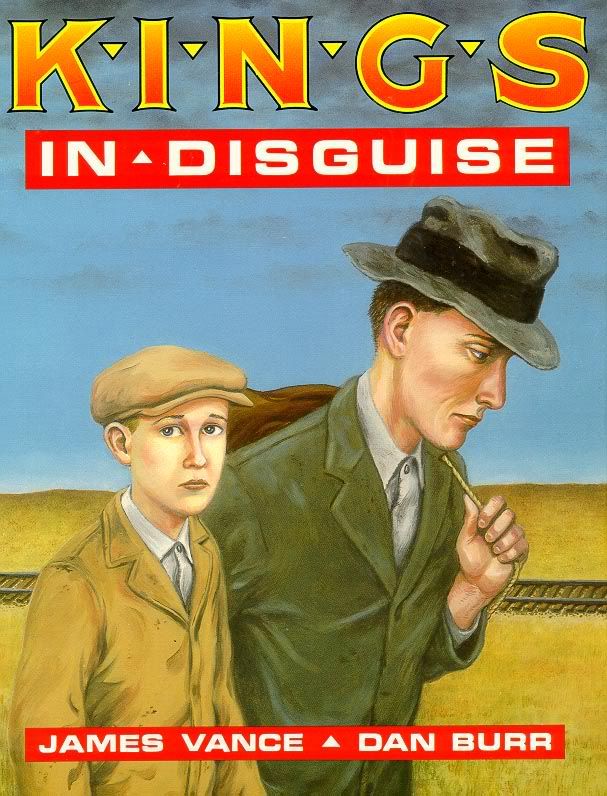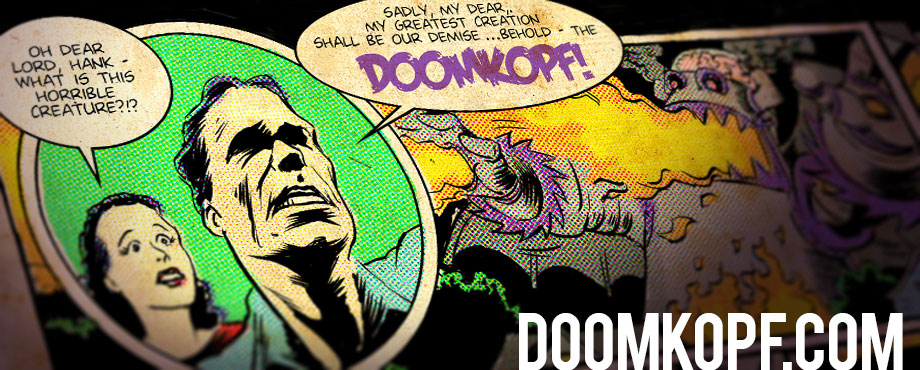Kings in Disguise, back in print
I know this is a superhero site, but I’m going to keep boring you all with these stupid “intellectual” comics.
 “Maus,” “Watchmen” and “Love and Rockets” are the books that typically come up when discussing the early graphic novels that boosted the form to new heights. But, as Neil Gaiman writes in a blurb for the new printing of “Kings in Disguise,” the book had just as big a role as any of those three.
“Maus,” “Watchmen” and “Love and Rockets” are the books that typically come up when discussing the early graphic novels that boosted the form to new heights. But, as Neil Gaiman writes in a blurb for the new printing of “Kings in Disguise,” the book had just as big a role as any of those three.
“Kings in Disguise” follows the travels and travails of 12-year-old Freddy, who’s forced into hobo life during the Great Depression. Author James Vance balances coming of age with historical fiction, but sticks closest to the personal tales. It reads a little like Mark Twain, but a much harsher Twain: Freddy’s first adventure is fighting off a hobo pedophile.
The stories are unrelentingly bleak, but the obvious research helps point out that it took place in an unrelentingly bleak time. The book touches on race riots in Detroit, protests at Henry Ford’s factory, socialist communities, and how they all broke into violence between the haves and have nots.
 The art, by Dan Burr, is consistent and detailed, most comparable to Harvey Pekar’s collaborators (as Alan Moore points out in his introduction). There’s nothing exceptional in terms of layout, no large spreads or anything too inventive. But every panel is strong and Burr gives his characters characteristics.
The art, by Dan Burr, is consistent and detailed, most comparable to Harvey Pekar’s collaborators (as Alan Moore points out in his introduction). There’s nothing exceptional in terms of layout, no large spreads or anything too inventive. But every panel is strong and Burr gives his characters characteristics.
I’m not sure I’d hold it aloft with the books that Gaiman did. The story covers only a small portion of Freddy’s life and the ending feels almost hollow. Since Vance created the book as a backstory to a character he had included in an early play, that makes sense. But since I, and most comics readers, aren’t much for theater productions dealing with the Great Depression, it might’ve been nice to color the edges in a little more thoroughly.
Of course, it’s hard to judge “Kings in Disguise” now, as opposed to 1988 when it first appeared. Vance writes in his introduction that the book resonated for him with the dire straits people found themselves in during Reagan’s administration. However, even if it’s 16 years too late, for only $16.95, it’s well worth a read.
